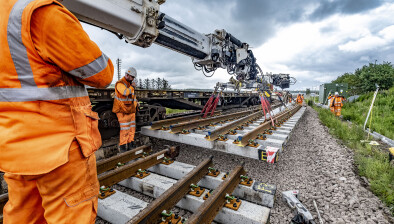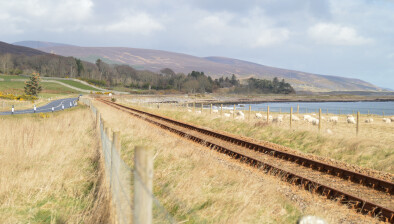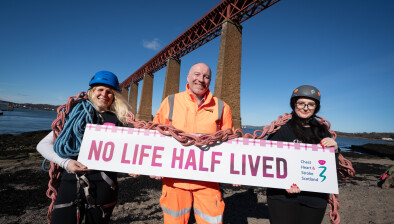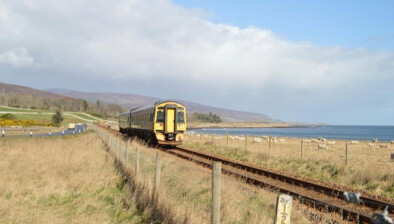Forth Bridge marks decade of World Heritage status

Pictured (L-R): Mark Watson, Fiona Hyslop and Alan Ross
The Forth Bridge will this weekend mark 10 years since the iconic landmark was officially inscribed as a UNESCO World Heritage Site.
The bridge became Scotland’s sixth World Heritage Site on 5 July 2015. It joined Edinburgh’s Old and New Towns, the Heart of Neolithic Orkney, New Lanark, the Antonine Wall, and St Kilda, with Flow Country added more recently last year.
The prestigious status is awarded by UNESCO to places of ‘outstanding universal value’ that meet strict criteria. The Forth Bridge was recognised as a ‘masterpiece of creative genius’ and an exceptional example in the evolution of bridge design.
The anniversary is being marked with a public exhibition on its history. It includes original plans and artefacts from the bridge’s construction, stories of the people who built and maintained it and information about other World Heritage sites inscribed in the same year.
Cabinet Secretary for Transport Fiona Hyslop said: “I’m pleased to help mark 10 years of World Heritage Status for the Forth Bridge, a world-renowned crossing that still plays a crucial role for our transport network in Scotland to this day.
“It is an iconic structure that is instantly recognisable, but it’s also an important part of Scotland’s industrial heritage. The engineering behind the Forth Bridge was cutting edge for its time and it is testament to those who designed and built it, as well as those who maintain it, that it continues to serve our rail network 135 years later.
“I’m particularly pleased to be here today as I was Culture Secretary when World Heritage Status was originally awarded to the Forth Bridge a decade ago. I look forward to continuing to celebrate the success of this remarkable structure for many years to come.”
The bridge was built using innovative engineering techniques that were groundbreaking for their time. It opened in 1890, with its large structure and bold red appearance quickly becoming an iconic part of Scotland’s landscape. Today, it remains one of the most recognisable structures in the world.
Alan Ross, director of engineering and asset management at Network Rail Scotland, said: “The Forth Bridge means a great deal to people in Scotland and across the globe, and its World Heritage status is a reminder of just how special it is.
“As we celebrate 200 years of the railway this year, it’s the perfect moment to reflect on the legacy of structures like the Forth Bridge, which has stood strong for 135 years.
“As its custodians, we’re proud to care for the bridge and work hard every day to keep it safe, resilient, and looking its best for many more generations to come.”
The bid to have the Forth Bridge recognised was led by the Forth Bridges Forum, established by the Scottish Government. Member organisations included Network Rail, Transport Scotland, Historic Environment Scotland, VisitScotland, and the local authorities of City of Edinburgh, West Lothian and Fife.
Mark Watson, deputy head of industrial heritage at Historic Environment Scotland, said: “The UNESCO listing of the Forth Bridge at the 39th meeting of the World Heritage Committee in 2015 was a memorable occasion. The greatest steel construction of the 19th century joined the list alongside monuments, cities and landscapes from all over the world, including Ephesus, Diyarbakir, Susa, Palermo, the Padre Tembleque aqueduct in Mexico and more.
“We are proud to have compiled the nomination of the Forth Bridge a decade ago, and we work alongside Network Rail, local authorities and other partners to ensure we continue to safeguard and tell the story of this unique bridge.”
The free exhibition is open between 10am-4pm on Thursday 3, Friday 2, and Saturday 5 July at the Transport Scotland Contact and Education Centre in South Queensferry, EH30 9SF.














